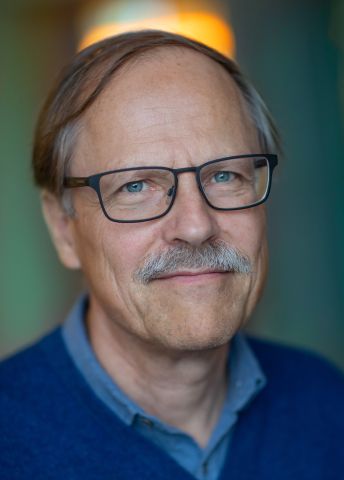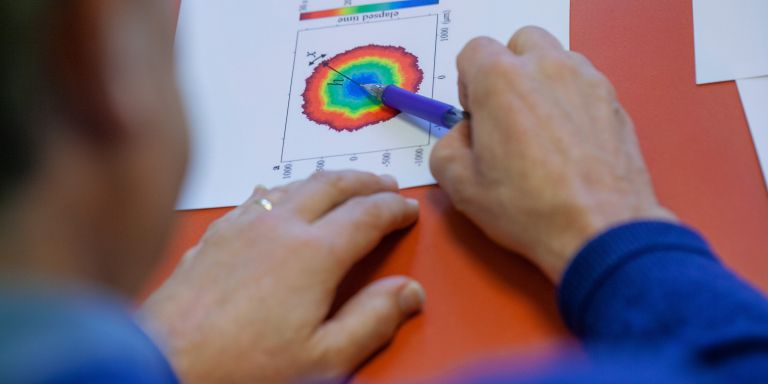
Kurt Johansson
Professor of Mathematics
Wallenberg Scholar
Institution:
KTH Royal Institute of Technology
Research field:
Mathematical physics and probability theory


Wallenberg Scholar
Institution:
KTH Royal Institute of Technology
Research field:
Mathematical physics and probability theory
Layer upon layer of new discoveries have constantly been made in mathematics. The field has grown without pause since Greek mathematicians laid the foundation for geometry. Nowadays, fresh impetus comes from fields in which mathematical problems often arise, such as physics, biology, bioinformatics, and statistics. Many of the problems to be solved in various applications are concrete, but there is also one of a kind that may further a better understanding of the world around us – elucidating mathematical patterns.
“As a mathematician you want to make a contribution by identifying new, interesting patterns. The tricky part is not finding an unsolved problem – there are plenty of those. No, the idea is to find a problem where you believe you can make progress,” explains Kurt Johansson, Professor of Mathematics at KTH Royal Institute of Technology, whose research has led to a renewed grant as a Wallenberg Scholar.
Johansson places several images on the table between us to explain the concept of random models. The first picture shows a number of colored dominoes arranged in a certain shape. When the shape is scaled up, a distinct circle is revealed in the pattern, even though the dominoes had been placed together completely at random.
“If we take an even larger shape, you will see something that looks like a perfect circle. A form of macroscopic pattern occurs, even though the configuration is determined by chance. This is a situation that interests me – when a deterministic pattern arises out of something that is random.”
His task is to understand the random patterns mathematically. That understanding will then lead to physical models and direct experiments.
“Originally, I was interested in the mathematical patterns. Later, they turned out to be interesting and useful for physicists in other contexts. But for me, the main thing that drives me are the fascinating mathematical structures.”
Traditionally, research in this field has conformed to the notion of a lone mathematician working in their room. But nowadays mathematicians are to be found in the international arena.
“It’s true that you spend long periods with a pen and paper, maybe trying to make simulations, if you can. Yet more and more of the work we do is collaborative, and most of our findings are published jointly. Today’s mathematicians operate in an international mathematical environment, and it is there that you find inspiration and new ideas,” he says.
This is why it is essential to create strong mathematical environments capable of attracting international researchers. Johansson’s first grant as a Wallenberg Scholar enabled him to set up a research team consisting of PhD students and a fair number of postdocs.
“It’s been highly positive for the whole department. We have now broadened our activities, which has given me more discussion partners – people who can also work on things in which I’m not involved. The subject is constantly growing, which makes it more difficult for a single person to possess all the expertise needed for each separate question.”
He thinks that mathematics differs in a number of ways from other scientific subjects:
“With mathematics you don’t necessarily have to work in project form, with milestones along the way, such as data gathering and analysis, followed by presentation. In my work I can’t know when I’ll achieve results. If I meet an obstacle, I might surmount it next week, in a year, or never. I don’t know in advance.”
"On the face of it, descriptions of mathematical projects can seem vague in comparison with other fields. This is one reason that the funding under the Wallenberg Scholars scheme is so welcome. The Foundation’s support has made a real difference to me in my work."
This is why there is seldom any point in setting specific objectives. Of course, this may be a disadvantage when the field is compared with others that are competing for funding.
“On the face of it, descriptions of mathematical projects can seem vague in comparison with other fields. This is one reason that the funding under the Wallenberg Scholars scheme is so welcome. The Foundation’s support has made a real difference to me in my work,” Johansson enthuses.
The next picture he places on the table is very similar to the previous one, but here a different pattern is displayed. He stresses that the computer-generated images do not exist in nature, but that the same mathematical variations can be found in a variety of contexts and fields.
“In some experiments and models, you can see very clearly the same type of random behavior as in the domino images, even though they have nothing to do with them. There are certain natural processes that occur, and we want to understand when and why this happens,” he says.
Johansson and other researchers in this field have formulated an assumption on certain random patterns that has been confirmed in special models, in numerical calculations, and by physicists experimentally.
“The main unsolved problem that interests many people is to achieve a mathematical understanding of universality – that these random patters occur in a wide variety of situations. Our models can contribute to that understanding, and ultimately help us to prove that universality.”
The models originally come from statistical physics, which describes systems containing large numbers of particles, such as atoms and molecules in gases, liquids, and solids. The subject is fundamental to all areas of physics.
“But my aim is to understand random patterns from a mathematical viewpoint. And it’s incredibly satisfying when everything falls into place – when you see how everything fits together and works.”
Text: Magnus Trogen Pahlén
Translation: Maxwell Arding
Photo: Magnus Bergström